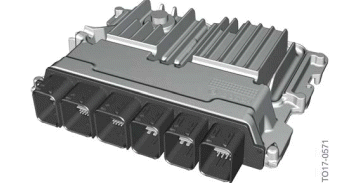BMW 3: Engine Electrical System
Digital Motor Electronics (DME)

DME 8 control unit
The Digital Motor Electronics (DME) is the computing and switching center. Sensors on the engine and the vehicle deliver the input signals and actuators implement the commands. The Digital Motor Electronics (DME) calculates the corresponding activation signals for the actuators from the input signals, and also the computing models and characteristic maps stored.
The operating voltage range of the Digital Engine Electronics (DME) is between 6 and 16 volts.
An ambient pressure sensor and a temperature sensor are integrated in the Digital Motor Electronics (DME).
The ambient pressure sensor permits precise determination of the density of the ambient air. This information is required for various diagnostic functions. In addition, in the event of a failure of the hot film air mass meter, a precise substitute value can be calculated for the cylinder filling with the help of additional input variables.
The temperature sensor measures the temperature inside the control unit. If the temperature there rises too sharply, multiple fuel injection is reduced for example, in order to cool the output stages slightly and to keep the temperature inside the control unit in a non-critical range.
The B46TU engine will have the DME 8 engine electronics generation. Depending on the engine version, the Digital Motor Electronics (DME) will be given a specific designation.
DME 8.x.y.z (x = number of cylinders, y = vehicle electric system architecture, z = H (hybrid) ) can be decoded as follows:
- DME 8.4.0 = B46TU
- DME 8.6.0 = B58
- DME 8.8.0 = N63TU2
